Pinky Toe Straightening Surgery
Pinky Toe Straightening Surgery is a crucial solution for those dealing with common foot deformities. Often, the importance of foot health is overlooked, and delaying necessary treatment can lead to more complex conditions. Among these, pinky toe deformities are prevalent, but thankfully, they can be effectively treated with this surgical procedure. If you’re considering this option, it’s essential to fully understand what the surgery involves before making your appointment. Let’s explore the details and see how it can help restore your foot health.
- Updated on: January 15, 2024
AVERAGE COST
$2,000
PROCEDURE TIME
20 – 40 Min
BACK TO WORK
1 week
FULL RECOVERY
3 weeks
Book Your Free Consultation
What Are the Causes and Symptoms of Pinky Toe Deformities?
There are numerous pinky toe deformities that may cause a patient trouble. Their causes can be quite different, from congenital diseases to injuries, arthritis, or even the pressure on the foot from shoes. When it comes to symptoms and signs of deformity, the most common one is, obviously, the appearance of the pinky toe, which can be misshapen in many ways.
The deformity can cause pain and discomfort when walking or standing. It can cause problems with fitting into shoes, and there is often friction between the toe and the shoe, which commonly results in the formation of corns and calluses. Additionally, some patients experience pain in the toe joints or in the ball of the foot – this condition is also known as metatarsalgia. Of course, corns and calluses can also develop on the balls of the feet. The most common toe deformities that occur on the pinky toe include:
- Bunionette,
- Claw toe,
- Mallet toe,
- Hammertoe.
Pinky Toe Straightening Surgery Procedure
The pinky toe straightening surgery, also known as hammertoe surgery, involves several steps to correct the deformity and realign the toe. Here is an overview of the procedure:
Anesthesia: The surgery is typically performed under local anesthesia, numbing the affected area. In some cases, general anesthesia may be used if necessary or preferred by the patient.
Incision: The surgeon will make small incisions near the affected toe, providing access to the bones, tendons, and joints that need to be addressed.
Joint Assessment and Correction: The surgeon will carefully evaluate the joint, examining the bones, tendons, ligaments, and other structures. Depending on the specific case, the surgeon will choose an appropriate technique to correct the deformity and realign the toe.
A. Joint Resection (Arthroplasty): If the joint surfaces are damaged or misaligned, the surgeon may remove a portion of the joint to improve alignment and relieve pressure on the toe.
B. Tendon Transfer: If the toe deformity is caused by imbalances in the tendons, the surgeon may perform a tendon transfer. This involves transferring a healthy tendon from another part of the foot or using a donor tendon to replace the damaged or weakened tendon, helping to correct the toe’s alignment.
C. Joint Fusion (Arthrodesis): In cases where the joint is severely damaged or the deformity is rigid, joint fusion may be performed. The surgeon removes the damaged portion of the joint and then stabilizes the bones by fusing them together using screws, plates, or other fixation devices. Over time, the bones fuse together, resulting in a straightened toe.
Wound Closure: After the necessary corrections are made, the surgeon will carefully close the incisions using sutures or other closure methods.
Bandaging and Recovery: The foot is typically bandaged after the surgery to protect the incisions and promote proper healing. The patient may be provided with a specialized shoe or postoperative footwear to protect the foot and aid in the healing process.
Postoperative Care: The surgeon will provide specific instructions for postoperative care, including wound care, medication management, activity restrictions, and follow-up appointments. Physical therapy or exercises may also be recommended to aid in rehabilitation and restore foot function.
It’s important to note that the exact details of the procedure may vary depending on the individual case and the surgeon’s preferred techniques. Consulting with a qualified foot specialist or orthopedic surgeon will provide you with personalized information and guidance based on your specific condition.
How Much Does Pinky Toe Straightening Surgery?
Pinky toe straightening surgery typically ranges in cost from $1500 to $5000. However, the actual price may vary based on factors such as location, surgeon, and case complexity. Consult with a qualified surgeon for accurate pricing information tailored to your specific situation.
Pinky Toe Straightening Surgery Cost in Miami
Pinky toe straightening surgery in Miami typically costs between $1500 and $3000. It’s important to consult with healthcare professionals or medical facilities in the area to get the most accurate and up-to-date pricing information for this procedure. Factors such as the specific clinic, surgeon’s fees, and any additional services included can influence the overall cost.
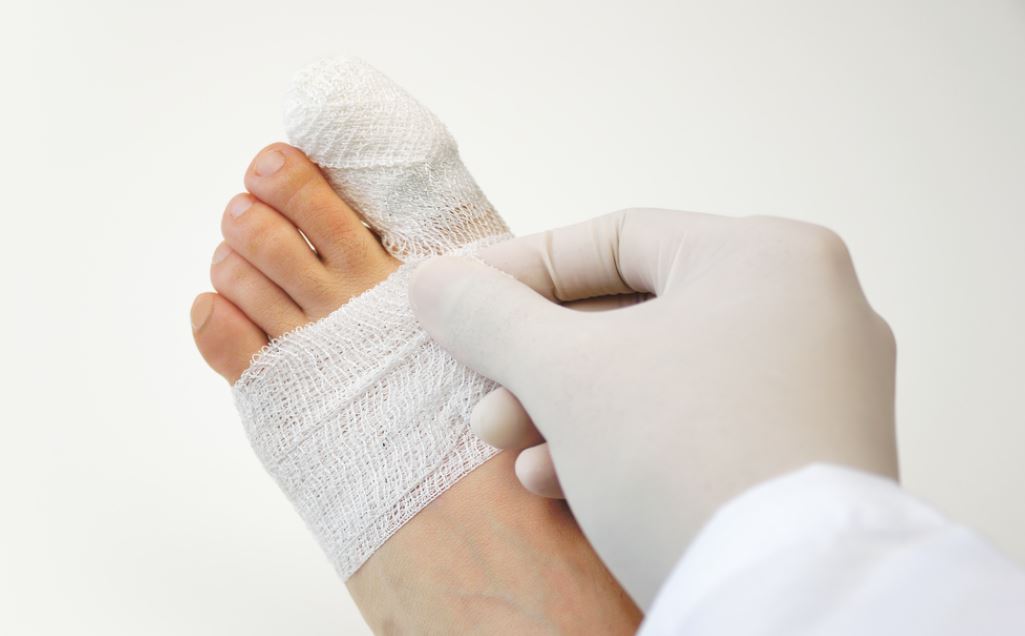
Pinky Toe Straightening Surgery Recovery: Tips, Timeframe
The recovery process can vary depending on the individual and the specific procedure performed, but here are some general guidelines:
Timeframe:
Immediate Post-Op (Day 1 – Week 1): You’ll likely experience some pain and swelling. You may be given a surgical shoe or boot to wear to help protect your foot and keep it in the correct position. You’ll need to rest and elevate your foot as much as possible.
Short-Term Recovery (Week 2 – Week 6): Swelling and pain should gradually decrease. You’ll likely start physical therapy to regain strength and mobility in your foot. You may be able to start putting some weight on your foot, but you’ll still need to wear the surgical shoe or boot.
Medium-Term Recovery (Week 7 – Week 12): You’ll continue physical therapy and gradually increase the amount of weight you put on your foot. You may be able to transition to wearing a normal shoe.
Long-Term Recovery (3 Months – 1 Year): By this point, you should be able to return to most of your normal activities, although some high-impact activities may still be restricted. It can take up to a year for your foot to fully heal and for you to regain full strength and mobility.
Tips for Recovery:
Rest and Elevate: Especially in the early stages of recovery, it’s important to rest and elevate your foot to help reduce swelling.
Follow Your Doctor’s Instructions: Your doctor will give you specific instructions about when you can start putting weight on your foot, when you can start wearing normal shoes again, and when you can return to your normal activities. It’s important to follow these instructions to avoid complications.
Physical Therapy: Physical therapy is a crucial part of the recovery process. It can help you regain strength and mobility in your foot.
Healthy Diet: Eating a healthy diet can help your body heal. Make sure you’re getting enough protein, vitamins, and minerals.
Stay Hydrated: Staying hydrated can also help your body heal.
Pain Management: Your doctor will likely prescribe pain medication to help manage your pain. Make sure to take it as directed.
Patience: Recovery can be a slow process, and it’s normal to feel frustrated at times. But it’s important to be patient and give your body the time it needs to heal.
Remember, everyone’s recovery process is different, and these are just general guidelines. Always follow your doctor’s specific instructions for your recovery.
Who Is the Best Candidate for Pinky Toe Straightening Surgery?
Pinky toe straightening surgery, also known as hammertoe surgery, is typically recommended for individuals who have a deformity or misalignment in their pinky toe joint. This condition is known as hammertoe, and it can cause discomfort, pain, and difficulty in wearing certain types of shoes. The surgery aims to correct the alignment of the toe and relieve the associated symptoms.
The best candidate for pinky toe straightening surgery is someone who has:
Persistent Symptoms: The individual should have persistent pain, discomfort, or difficulty in walking or wearing shoes due to the hammertoe deformity. Non-surgical treatments, such as padding, shoe modifications, or physical therapy, should have been attempted without significant improvement.
Toe Deformity: The pinky toe should demonstrate a visible deformity, such as a bent or contracted position. This deformity may be flexible or rigid, and it should be causing functional problems for the patient.
Failed Conservative Measures: The individual should have tried conservative treatments for an adequate period, typically around six months to a year, with no significant improvement in symptoms or toe alignment. Conservative treatments may include wearing roomier shoes, using padding or orthotic devices, and practicing exercises or stretches.
Good Overall Health: The individual should be in good overall health, without any medical conditions or medications that could significantly increase the risks associated with surgery. It is important to have a thorough evaluation by a healthcare professional to assess the individual’s general health and suitability for surgery.
Realistic Expectations: The candidate should have realistic expectations about the outcomes of the surgery. While pinky toe straightening surgery can improve the alignment and alleviate symptoms, it may not completely restore the toe to its original appearance or eliminate all discomfort.
It is crucial to consult with a qualified healthcare professional, such as an orthopedic surgeon or a foot specialist (podiatrist), who can assess your specific condition, evaluate your suitability for surgery, and provide personalized recommendations based on your individual circumstances.
How to Prepare for Surgery?
Preparing for surgery is essential to ensure a smooth and successful procedure. Here are some general steps to help you prepare:
Consultation with the Surgeon: Schedule a consultation with your surgeon to discuss the details of the procedure, address any concerns, and receive specific instructions for your case.
Medical Evaluation: Undergo a comprehensive medical evaluation, including a physical examination and any necessary tests or lab work. This will help assess your overall health and identify any potential risks or underlying conditions that may impact the surgery.
Medications and Supplements: Inform your surgeon about all medications and supplements you are currently taking, including prescription drugs, over-the-counter medications, and herbal supplements. They will provide guidance on which ones to continue or discontinue prior to the surgery.
Lifestyle Adjustments: Make any necessary lifestyle adjustments as advised by your surgeon. This may include quitting smoking, reducing alcohol consumption, or making dietary modifications.
Preoperative Instructions: Follow any specific preoperative instructions provided by your surgeon, such as fasting requirements (avoiding food and drink for a certain period before surgery), showering with a prescribed antibacterial soap, or refraining from using certain products on the surgical area.
Arrange Transportation and Support: Plan for transportation to and from the surgical facility, as you may be unable to drive immediately after the procedure. Additionally, arrange for a responsible adult to accompany you and provide support during the recovery period.
Preparing Your Home: Make your home recovery-friendly by organizing essential items within easy reach. This includes medications, comfortable clothing, assistive devices (if required), and any other items recommended by your surgeon.
Postoperative Care: Understand and follow the postoperative care instructions provided by your surgeon. This may involve wound care, medication schedules, activity restrictions, and follow-up appointments.
It’s important to communicate openly with your surgeon, ask any questions you may have, and follow their specific instructions, as they may vary depending on the procedure and individual circumstances.
Schedule the Pinky Toe Straightening Surgery With Your Surgeon in Miami
Do you think you would be an excellent candidate for pinky toe straightening surgery? If so, you might want to consult with your doctor in Miami and learn a bit more about this procedure. Luxe Foot Surgery clinic can help you on your quest for perfectly aligned toes – each and every member of our team would be happy to answer your questions.
Why don’t you contact us to book your free consultation? You can get your appointment by calling our office, or you can fill out an inquiry form on our website – it only takes a minute, and we will get back to you as soon as possible. We’re looking forward to seeing you at our clinic!
Frequently asked questions
The recovery time after toe straightening surgery depends on what kind of procedure was performed. Generally speaking, it takes four to six weeks for the initial recovery – that’s when pins and screws will be removed, and the patient can slowly return to their regular activities. Returning to demanding physical activity might have to wait for a bit longer, though. The doctor will perform a final revision after six months when most patients are fully healed. After a year, the foot is completely healed and back to normal.
The cost of toe straightening surgery varies depending on a few factors – the complexity of the case, the surgeon who performs the procedure, and the place where the surgery is done. When it comes to surgeries in Miami, the average cost for toe straightening is $4,200. If the procedure was deemed a medical necessity, the insurance might cover it. But if you’re doing it strictly for cosmetic reasons, you will have to pay from your own pocket.
Yes, there is a surgery that can make your toes straight. Toe straightening surgery is a minimally invasive procedure that’s usually performed under local anesthesia. It takes less than one hour in most cases, and the recovery period is quick compared to traditional foot surgery.
Surgeons can use a few different techniques to straighten crooked toes – what will be done depends on the particular problem that caused the toes to be misshaped in the first place. In general, the commonly used techniques are joint fusion, joint resection, osteotomy, and tendon transfer.
Toe straightening surgery isn’t painful because it’s performed under local anesthesia. However, once the anesthetic wears off, you are likely to experience some level of pain – the intensity is individual, and it varies from case to case. Your doctor will advise you on what over-the-counter pain medication you should take to keep the pain under control.
In most cases, minimally invasive toe surgery is performed under local anesthesia, which means that the patient is awake the entire time. Still, the procedure is quick and painless, so this doesn’t pose any problem.
References
University Orthopaedic Surgeons. (n.d.). Treatments of the Smaller Toes. Retrieved from https://www.uosortho.com/foot-and-ankle-guide/treatments-smaller-toes
- Brisbane & Gold Coast Foot Surgery. (n.d.). What problems can happen to the small toes. Retrieved from https://footsurgery.com.au/surgery-for-problems-of-the-small-toes/
- Milton Keynes University Hospital. (n.d.). Small Toe Surgery. Retrieved from https://www.mkuh.nhs.uk/patient-information-leaflet/small-toe-surgery
- Healthdirect. (n.d.). Surgery for problems of the small toes. Retrieved from https://www.healthdirect.gov.au/surgery/surgery-for-problems-of-the-small-toes
- Mercy Health. (n.d.). Tendon Transfer Surgery in the Foot. Retrieved from https://www.mercy.com/health-care-services/orthopedics-sports-medicine-spine/specialties/foot-ankle/treatments/tendon-transfer-surgery-in-the-foot
- Luxe Foot Surgery. (n.d.). Toe Straightening Surgery Miami. Retrieved from https://www.luxefootsurgery.com/toe-straightening-surgery-miami/
Latest Articles

Toe Shortening Surgery in Florida: What You Need to Know
Do you desire to undergo toe shortening surgery in Florida? Whether it’s to improve functionality, enhance aesthetics or alleviate annoying

Flex and Soothe: Best Stretches for Bunion Sufferers
The bunion is a complex deformity – it can get progressively more painful over time, and at some point, you
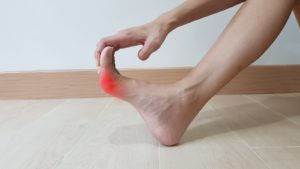
Difference Between a Bunion and a Corn
It’s not uncommon for people to confuse bunions and corns – even though these two conditions have quite different etiology,
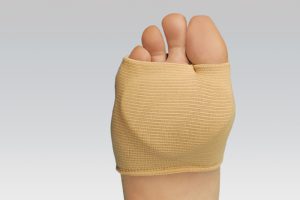
Bunion Sleeve 101: What You Need to Know
One of the ways to alleviate pressure and avoid exposing your bunion to friction while walking is by wearing a

Failed Hammertoe Surgery: Causes, Complications, and Solutions
No matter how experienced a doctor is or how routine the procedure, every surgery poses a certain amount of risk

Addressing Foot Deformities: Bunionectomy and Hammertoe Surgery Explained
Foot deformities can limit mobility and cause pain and discomfort. Genetics and footwear can lead to the progression of the

Failed Hammertoe Surgery: Causes, Complications, and Solutions
No matter how experienced a doctor is or how routine the procedure, every surgery poses a certain amount of risk

Floppy Toe After Hammertoe Surgery: Understanding the Phenomenon
Even though hammertoe surgery is a routine, minimally invasive procedure, it still carries a certain amount of risk. One of
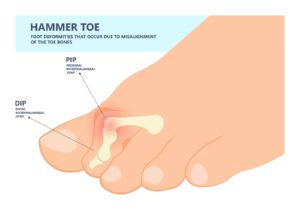
Hammertoe Revision Surgery: Understanding the Procedure and Its Purpose
Repairing severe hammertoe deformities is difficult, and the results depend not only on the success of the surgery but on
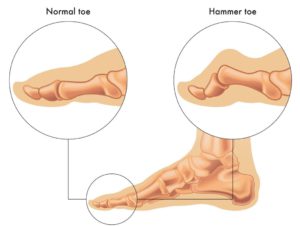
Toe Surgery for Hammertoe Correction
Studies show that hammertoes are quite common – they affect around 3% of the US population older than twenty-one. Those
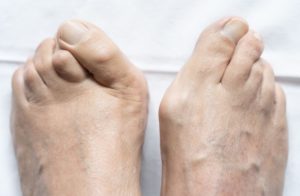
What to Expect After Bunion and Hammertoe Surgery
Having surgery isn’t pleasant, so it’s natural that you want to know what to expect after bunion and hammertoe surgery.

Recovery From Hammertoe and Bunion Surgery
Recovery from hammertoe and bunion surgery isn’t a very painful process, but it requires a lot of patience and the